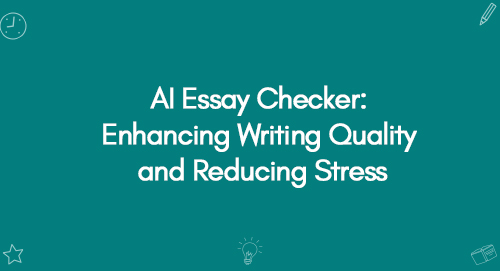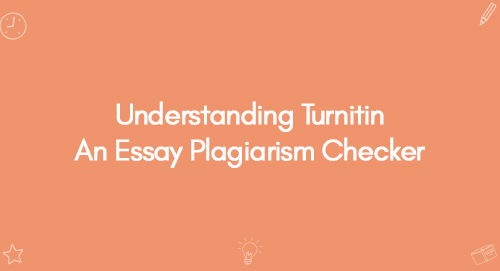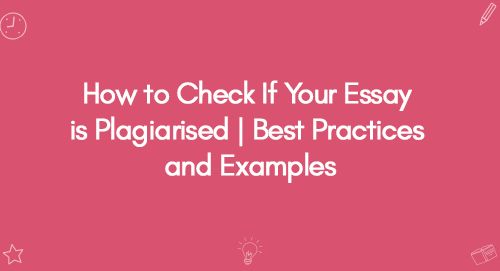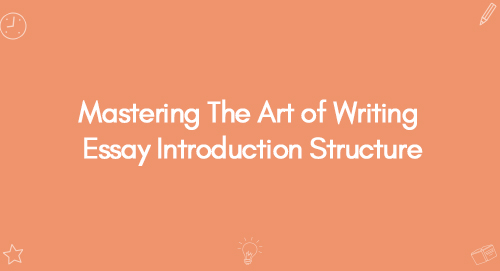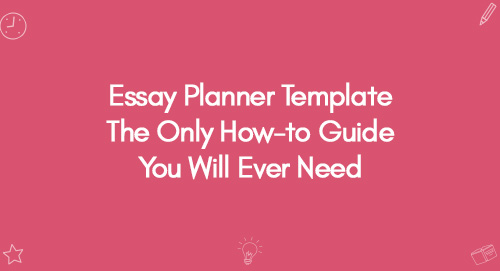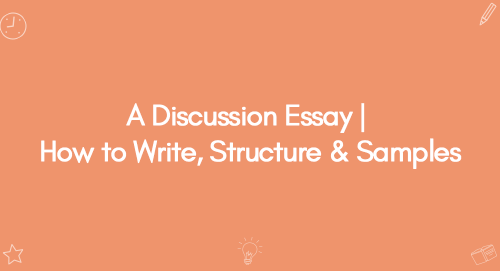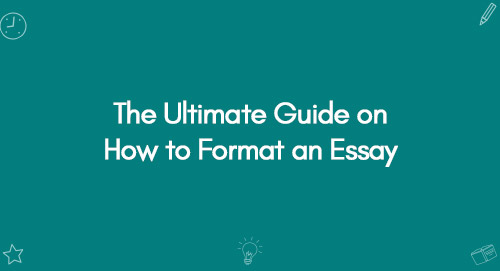How To Format An Essay | An Ultimate Guide
How To Format An Essay | An Ultimate Guide
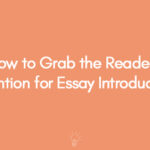
How to Grab the Reader’s Attention for Writing An Essay Introduction Paragraph | Practical Ways and Examples
October 26, 2022
How to Write A Good Conclusion: Strategies and Tips
October 27, 2022An essay is a form of written composition that presents an author's perspective, arguments, or reflections on a specific topic. Writing an essay is important because it helps individuals articulate their thoughts, organise ideas, and communicate effectively on a specific topic.
Learn How To Write an Academic Essay
Here you will find a complete guide on how to format an essay and what key elements must be included in a quality essay draft.
Example: 1 Review Discursive Essay Example
Example: 2 Essay Writing Examples
Free Premier Essay Writing Topics
Essay Writing is an essential part of academics which presents the ideas, arguments, opinions, or positions of the writer regarding the topic. The writer supports his claims using facts, evidence, or survey studies.
- Clear presentation or understanding of the type of essay
- An appealing introduction with an unambiguous thesis statement
- A well-defined structure of body paragraphs supporting the thesis
A prospective conclusion with an optimistic tone
A Guide to Essay Writing Format | Key Elements & Tips to Succeed
A well-structured essay format is important for clear writing. It helps both the writer and reader follow a logical sequence of ideas. We'll explore the key components of the format and why it's important to follow style guides.
1. Title
The title of an essay is like a guide that shows readers what the essay is going to be about. A good title not only tells readers what the essay is about but also makes them interested in reading more.
2. Introduction
An essay's introduction is essential. It introduces the topic, presents the main argument, and engages the reader. A compelling introduction sets the tone for the rest of the essay.
3. Body
In an essay, the main part is called the body. It is like a canvas where different ideas are presented in each paragraph. These ideas should be arranged in a clear order, with each paragraph discussing a new concept that is supported by facts and examples. This section is very important because it is where the author develops their arguments and shares their insights.
4. Conclusion
The conclusion includes all the recommendations, implications, and key findings related to the topic. It offers an opportunity to leave a lasting impression on the reader.
5. Style Guides
Choosing a style guide is essential for crafting an impactful essay draft. Whether it's MLA, APA, or Chicago, adhering to a specific style guide ensures uniformity in formatting and citation. Each style guide comes with its set of rules for in-text citations, references, and overall document structure.
Exploring Different Essay Formats: A Writer's Guide
Essay writing is an art, and like any form of art, it comes with diverse structures that writers can employ to shape their ideas and arguments. Each essay structure serves a different purpose, providing writers with a framework to convey their thoughts effectively. Here, we will assist students and writers with some of the most common essay structures and understand when and how to use them.
1. Critical Analysis Essay Format
A critical analysis essay follows a structured format that includes an introduction, body paragraphs, and a conclusion. In the introduction, provide a brief overview of the subject you are analysing and present a clear thesis statement that outlines your main argument or evaluation. The body paragraphs should focus on specific aspects or elements of the subject, presenting evidence, examples, and analysis to support your critique. Be sure to organise your analysis logically and explore both strengths and weaknesses. In the conclusion, summarise the main points, restate your thesis, and offer any final insights or recommendations. Maintain a critical and evaluative tone throughout the essay, supported by evidence from the subject under scrutiny.
2. Argumentative Essay Structure
For writers aiming to present a compelling argument or express a specific point of view, the Argumentative Essay format is an effective way to express your point. Starting with an introduction that establishes the thesis, this structure further includes body paragraphs that provide evidence and arguments. The conclusion then summarises key points and leaves a compelling impact on the reader's mind.
3. Reflective Essay Format
It is important to have a clear format in mind while writing a reflective essay. Typically, this type of essay will include an introduction, several body paragraphs, and a conclusion. In the introduction, briefly introduce the experience or topic you are reflecting on and include a thesis statement that highlights the main lessons. In the body paragraphs, share personal experiences, thoughts, and emotions related to the topic. Use examples to illustrate your points and reflect on how the experience influenced you. Finally, in the conclusion, summarise the key points and discuss any changes or growth that occurred as a result of the experience. Remember to maintain a reflective and personal tone throughout the essay.
4. Comparative Essay Structure
When the goal is to compare and contrast two or more entities, the Comparative Essay Format is a valuable tool. It includes an introduction providing context for the comparison, followed by body paragraphs that highlight different aspects of the subjects. The conclusion includes all the comparative threads, summarising key points and offering a conclusive statement on the comparison.
5. Descriptive Essay Structure
For writers aiming to describe a person, place, or thing, the Descriptive Essay format serves as a tool that paints a detailed picture or image. It contains an introduction providing context, followed by body paragraphs describing various facts. The conclusion then brings these descriptive elements together, summarising key points and providing a conclusive statement on the description.

How to Format An Essay in Different Styles!
There are different essay formatting norms in different fields. We will see how to format an essay in different styles in the coming section.
MLA Format
MLA format is one of essays and research papers' most common formatting styles. It is typically used in the humanities, providing a consistent and easy-to-read format. MLA format includes in-text citations and a research citation page at the end of the essay.
APA Format
Another popular format for essays and research papers is the APA format. It is frequently used in the social sciences because it offers a structure that is straightforward, succinct, and simple to read. In-text citations and reference lists are also included in the APA format for essays.
Check this post on how to write citations to better understand the differences between MLA and APA Format.
Chicago/Turabian Format
A frequent formatting design for essays and research papers is Chicago/Turabian. Since it offers a uniform and simple-to-read structure, it is frequently employed in the humanities and social sciences. In-text citations and a bibliography are also included in the Chicago/Turabian formatting of the essay.
Harvard Format
Another frequently used structure for essays and research papers is the Harvard format. The format's emphasis on clarity and conciseness is frequently employed in the humanities and social sciences.
Vancouver Format
Due to its straightforward and condensed format, it is frequently employed in the sciences. In-text citations and a reference list are also incorporated in the Vancouver format.
Oxford Format
The Oxford format is another variation of the MLA and APA formats. It is typically used in law disciplines. The Oxford format uses footnotes, endnotes and a bibliography at the end of the essay.
How to Draft the Essays, Cite Page?
For creating your citation page, consider the following guidelines;
Include All Sources
Include all the sources you used in your essay. It includes any books, articles, websites, or other materials you may have referenced. Be sure to include both in-text citations and full citations for each source.
Use a Consistent Format
When listing your sources, be sure to use a consistent format. You should use the same format for each source, such as MLA or APA. If you are unsure which format to use, check with your instructor or the guidelines for the assignment.
Alphabetise your List
Once you have listed all your sources, alphabetise them by the author's last name. If there is no author listed, alphabetise by the document's title.
Include All Necessary Information
For each source, be sure to include all the necessary information. It includes the author's name, the work's title, the date it was published, and the URL (if it is a website).
Check for Accuracy
Before submitting your essay, double-check your cite page for accuracy. It includes ensuring all the information is correct, and all the sources are included.
Conclusion
In conclusion, formatting an essay is a crucial aspect that contributes to its overall effectiveness. A well-formatted essay enhances readability and helps convey ideas in a clear and organised manner. Proper formatting not only meets academic requirements but also provides a polished presentation that engages readers and communicates the intended message effectively.
Related Topics
- Generic nouns
- Specific nouns
- Group nouns
- Individual pronouns
- Mass and discrete nouns
Examples
- Generic nouns
- Specific nouns
- Group nouns
- Individual pronouns
- Mass and discrete nouns
Other
-
Generic nouns
-
Specific nouns
-
Group nouns
-
Individual pronouns
-
Mass and discrete nouns


